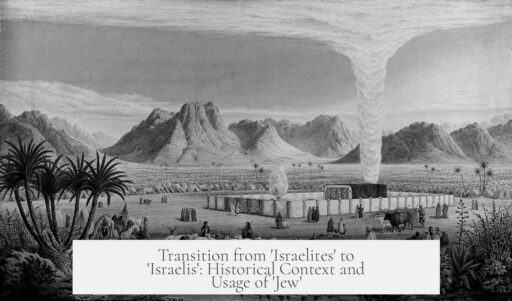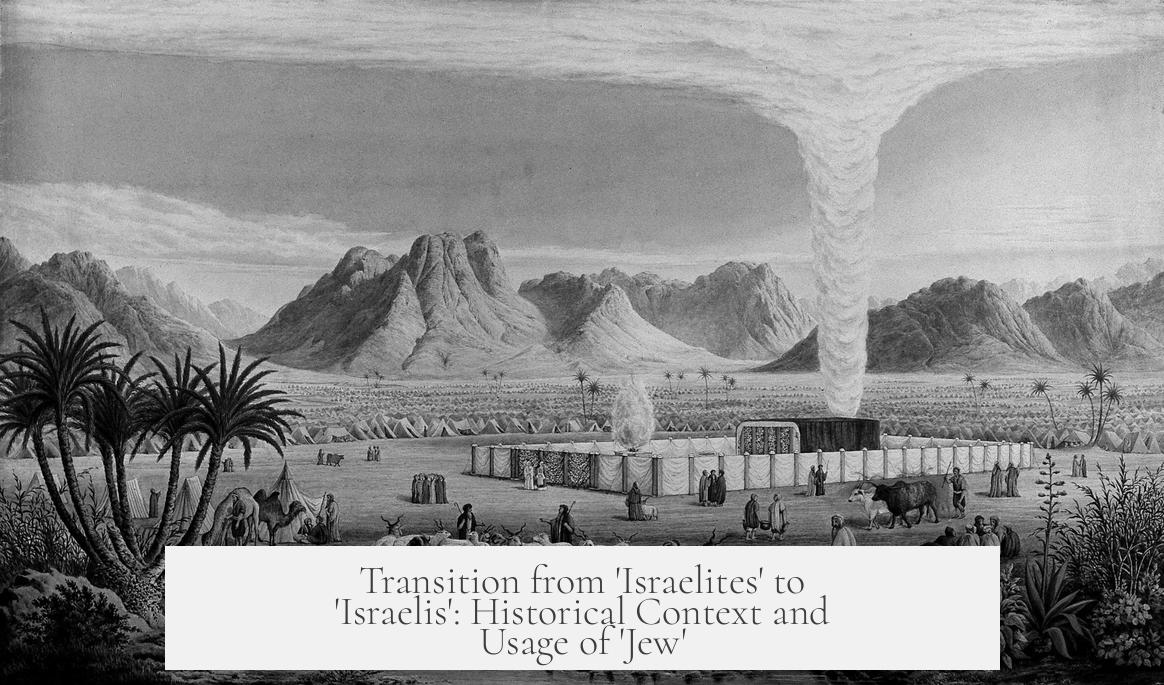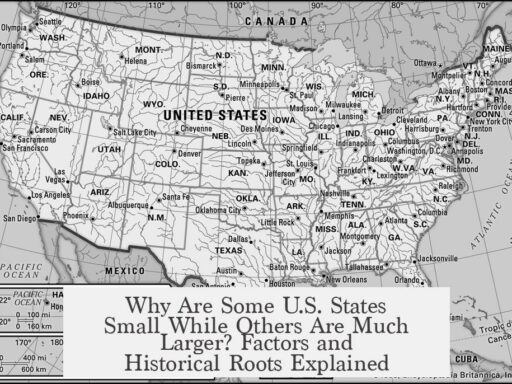The shift from using “Israelites” to “Israelis” occurred with the establishment of the modern state of Israel in 1948. The term “Israelites” historically refers to the ancient ethnic and religious group descended from the 12 tribes of Israel, as depicted in the Bible. “Israelis,” on the other hand, denotes the citizens of the contemporary state of Israel. The term “Jew” emerged earlier from the tribe and region of Judah (Yehudah) and came to represent the people and faith descended from or associated with the tribe of Judah.
The term “Israelites” originates from ancient times. It describes the twelve tribes that formed a federation in the late Bronze Age. This group is traced religiously and ethnically to the biblical Israelites mentioned in Hebrew scriptures and has been used continuously in that historical context. In Hebrew, the term Israel (or Yisrael) and בני ישראל (Bnei Yisrael, meaning “children of Israel”) remain active in religious and cultural texts today. It refers both to the ancient collective and, more broadly, to Jews who are not from priestly castes.
After historical events like wars and the division of the ancient Israelite kingdom, the tribe of Judah became dominant. The geographic area inhabited by the tribe was called Yehud Medinata under Persian rule, which is the root of the English term “Jew.” The English “Jew” traces back to the name Yehudah (Judah). Initially, this term did not sharply distinguish between a Judahite, Judean, or Jew, but over time, “Jew” came to broadly identify followers of Judaism or descendants of the tribe of Judah.
- The term “Jew” typically refers to the people descended from Judah or those practicing Judaism.
- “Israelite” often stands for the older, biblical collective identity of the twelve tribes.
- “Israeli” is a modern political-national designation for citizens of the State of Israel since 1948.
The transition from “Israelites” to “Israelis” as a common identifier happens only in modern times with statehood. Before 1948, no one was called an “Israeli” because Israel as a nation-state did not exist. Instead, Jewish people were described religiously or ethnically as Jews or Israelites, depending on context. The modern term “Israeli” includes citizens of all religions and ethnicities living in Israel, including Jews, Arabs, Druze, and others.
In Hebrew, the term for “Israel” or “Israelite” remains in use not only for historical or biblical contexts but also to denote ethnic identity in religious matters. The English language separates “Jew” as a cultural and religious term and “Israeli” as a nationality, while “Israelite” is largely reserved for ancient contexts. This results in distinctions that do not strictly exist in Hebrew usage.
Additional English terminology complicates this further. For example, “Israelian” is an obscure term referring specifically to the ancient biblical kingdom of Israel. This term appears in academic or linguistic discussions, such as “Israelian Hebrew,” but is not widely used in general parlance.
| Term | Meaning | Usage Timeframe | Main Context |
|---|---|---|---|
| Israelite | Descendants of 12 tribes of ancient Israel | Ancient to biblical times, religious texts | Ethnic/religious identity in ancient and religious contexts |
| Jew | Descendants/followers of Judah tribe and Judaism | Post-biblical era to present | Ethnic/religious identity in cultural and religious contexts |
| Israeli | Citizen of modern state of Israel | Since 1948 to present | Political nationality |
| Israelian | Relating to biblical kingdom of Israel | Rare/academic usage | Historical, linguistic discussions |
In summary, the word “Israelites” is historical and biblical. It defines a broad ancient collective. “Jew” gained prominence after Judah became central and is now the common term for descendants or followers of Judaism. “Israeli” is defined by citizenship and politics, emerging post-1948 with the foundation of Israel.
- “Israelite” refers to biblical times and ethnicity.
- “Jew” evolves from the tribe and land of Judah, broadening to include all followers of Judaism.
- “Israeli” is a modern national identity created after the formation of Israel.
- Hebrew language keeps older terms alive simultaneously with modern usage.
- English distinguishes these terms more sharply based on history and politics.
When did people start using “Israelis” instead of “Israelites”?
The term “Israelis” began to be used after 1948, when the modern state of Israel was established. Before that, “Israelites” referred primarily to the ancient ethnic and religious group from biblical times.
Why did the term “Jew” replace “Israelite” in English?
“Jew” comes from “Judah,” the dominant tribe after various ancient wars. This tribe’s name became common for all Israelites, especially in English, where “Jew” reflects this historical shift.
Does “Jew” mean the same as “Israelite” in Hebrew?
No. In Hebrew, “Israel” still appears frequently and hasn’t been fully replaced by “Jew.” The term “Israelite” can mean a current Jewish person or an ancient member of the tribes, depending on context.
Are “Israeli” and “Israelite” interchangeable?
In English, no. “Israeli” exclusively refers to citizens of modern Israel, while “Israelite” relates to the ancient people of Israel. Hebrew does not make as sharp a distinction.
What is the origin of the term “Jew”?
“Jew” comes from “Yehudah,” the Hebrew word for Judah, a tribe, people, and region. This term moved into English through historical and geopolitical changes after ancient Israel’s division.



